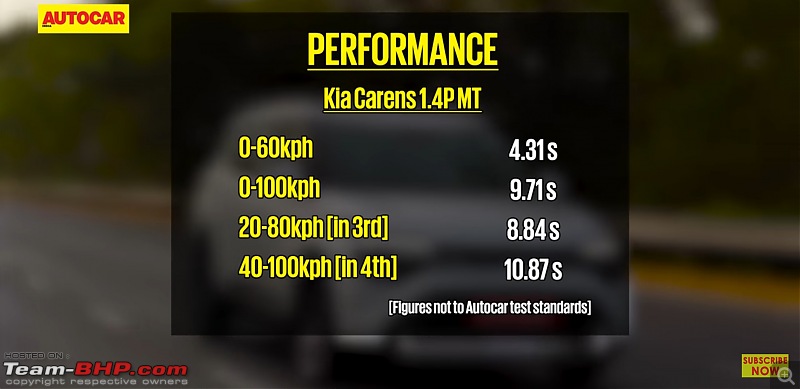Quote:
Originally Posted by srikanthmadhava  Sorry, this is a bit out of topic.
1. Why do some manufacturers not make this recommendation.
What do they gain or lose here?
2. Does it require them getting some certification for the recommendation or do they need to add additional equipment and costs?
3. If this is a low hanging fruit, why not pluck it? How important is this recommendation for GNCAP scoring? |
Manufacturers normally are supposed to recommend whatever child seats they internally tested the car with, or seats that they know the car will perform well with. The GNCAP rating for child occupant protection is for a combination of the car and the child seats nominated by the manufacturer.
The same car with different child seats could score very differently.
Very often manufacturers have very tight development deadlines and don't do a full-scale test with child restraints, which is irresponsible. This also often results in them not knowing which child seat to nominate.
If the manufacturer cannot nominate a child seat then no points can be awarded for the dynamic test.
For your second question, no, not necessarily. They just have to nominate child seats that do not have compatibility issues with the car. Global NCAP expects that the manufacturer knows their car best. The manufacturer is supposed to know which child seats are available on the market, which ones are compatible in a particular seating position and which are not (in the case of universal (belted) CRSs and non-i-Size ISOFIX CRSs). Some manufacturers do not know that, which means that they did not internally check this.
There are some cases where manufacturers do know which available CRSs are compatible and recommend one of them, but they did not do their internal safety testing using the specific CRS they recommended. That is, the recommended CRS can be installed correctly in the car but the manufacturer might not know how it performs in a crash. This can cause a bad official GNCAP dynamic test.
In these cases
just nominating a child seat is not enough.
Classic cases are GNCAP's South Africa project. Kia and Honda seem to have internally tested the Picanto and Amaze with other restraints (presumably Britax, which were not available in all RHD African markets at the time of the test). Why did they test using a CRS that was not available in Africa? Well, it's anybody's guess, but the Picanto is a global model, and even the Amaze was primarily developed for India.
Kia recommended Maxi-Cosi CRSs for the Picanto
presumably because the one they wanted to recommend was not available in Africa.
This is what happened: (see 0:47)
ISOFIX seats normally have a list of cars they will definitely work with.
After the GNCAP test Maxi-Cosi removed the Kia Picanto from this list. In this case it would probably be better for Kia to not recommend a CRS and lose all dynamic points anyway, than risk something like this.
Similar case with the Honda Amaze. Now it's impossible to say why exactly Honda did what they did, but Honda has normally nominated Britax restraints for their other cars in all Latin NCAP tests of the same configuration. When it came to South Africa they had to nominate Maxi-Cosi.
The armrest opened during the test, the 18 month-old's CRS handle broke and it was classified complete ejection (loss of all dynamic points) and the 3 year old's head made hard contact with some interior trim on the C-pillar (0 points for the head)
See 0:40:
This probably means that Honda did not bother doing their internal testing with any CRS available on the African market, though they knew full well that they would be selling the Amaze there.
Hence
recommending child seats does not necessarily mean a good score.
The conclusion is that the manufacturer is supposed to know best which child seats on the market perform best with their car.
Very often you will find the recommended child restraints listed in the user manual or available as an official dealer accessory.
For example,
CRS recommendation for the Škoda Kushaq:
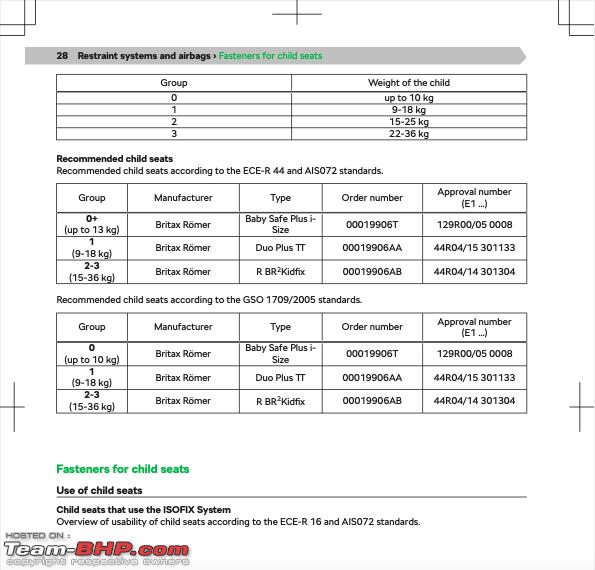
For the MG Astor:

For the Honda Amaze (note "except African models" and *1):
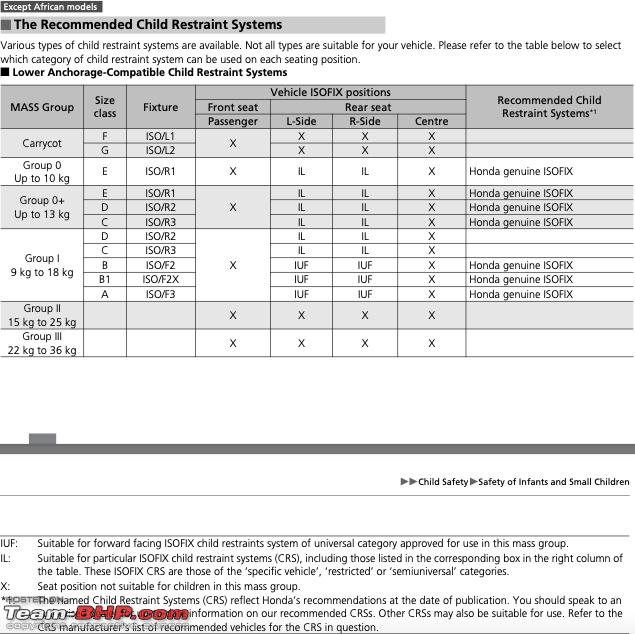
There is no recommendation for the
Kia Seltos or
Hyundai Creta.
Manufacturers who skimp on this during development either recommend poorly performing child seats or do not recommend child seats at all (in which case Global NCAP makes their own choice but does not award any points for dynamic performance).
For your third question, it is "low-hanging" only if the manufacturer knows what to recommend. For example, for what it's worth, Maruti Suzuki have always engaged with Global NCAP and have recommended child seats for all tests. However, their child seat recommendations have been - pardon my language - stupid. In all cars with ISOFIX (Swift, Vitara Brezza, Ertiga) they put the 18 month-old forward facing which means loss of all head and neck points and it is against UN R44 recommendation.
The reason I have been specific about the Kia Carens is that when the Seltos was tested, Kia did not nominate a CRS so they were not awarded points for the dynamic test. This is not unusual of Hyundai-Kia. In fact in most cases they even refuse to attend the GNCAP test (manufacturers are always invited to witness the test, for transparency and to collect data so they can predict the result). Even in the case of the Hyundai New i10, Hyundai did not nominate a child seat. In Brazil Hyundai had a rather '
public' feud with Latin NCAP over their child seat nomination for the old HB20.
 (1)
Thanks
(1)
Thanks
 (5)
Thanks
(5)
Thanks
 (1)
Thanks
(1)
Thanks

 (1)
Thanks
(1)
Thanks
 (1)
Thanks
(1)
Thanks

 (6)
Thanks
(6)
Thanks
 (5)
Thanks
(5)
Thanks
 (1)
Thanks
(1)
Thanks
 (2)
Thanks
(2)
Thanks
 (14)
Thanks
(14)
Thanks

 (1)
Thanks
(1)
Thanks







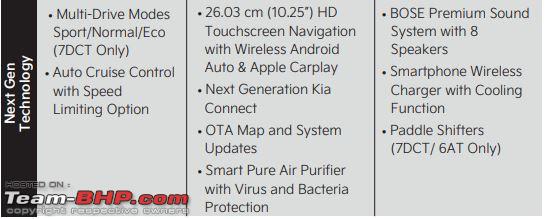




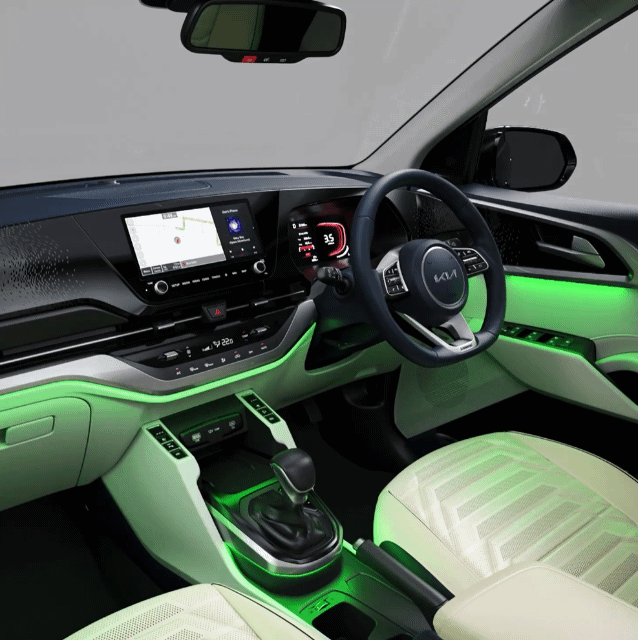
 Kia did a Skoda with the clever packaging and storage spaces.
Kia did a Skoda with the clever packaging and storage spaces. 


